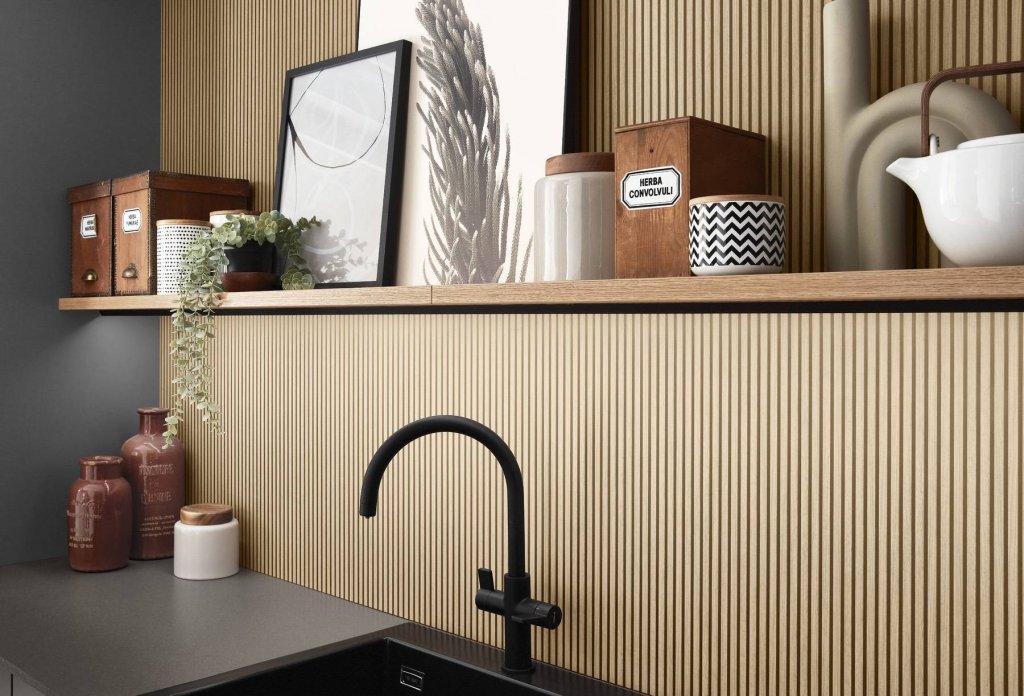
For years, minimalist flat-fronted cabinetry dominated kitchen design, creating sleek, uncluttered lines that epitomised modern elegance. While their appeal endures, a quieter, more sophisticated trend is gaining significant traction in the UK and beyond: fluted cabinets. This elegant design choice is injecting a much-needed layer of subtle texture and refined detail into kitchens, moving away from stark simplicity towards a softer, more tactile aesthetic.
Fluting, characterised by a series of evenly spaced, vertical grooves or ridges, isn't a new concept. It has a rich history in classical architecture, from ancient Greek columns to Art Deco detailing. Now, it's making a triumphant return in contemporary interiors, particularly in kitchen cabinetry, islands, and even integrated appliances.
Why the Resurgence?
The rise of fluted cabinetry can be attributed to several factors:
A Desire for Depth and Interest: In a world saturated with smooth, flat surfaces, homeowners are seeking visual interest without overwhelming the space. Fluting offers just that – a subtle play of light and shadow that adds dimension and character to what might otherwise be a monotonous expanse of cabinetry. It introduces a sophisticated rhythm that draws the eye, providing a gentle counterpoint to polished worktops and smooth splashbacks.
Tactile Appeal: Beyond the visual, fluted surfaces invite touch. The subtle undulations create a haptic experience that makes a kitchen feel more inviting and less sterile. This emphasis on texture aligns with a broader trend towards sensory-rich interiors that stimulate more than just sight.
Versatile Elegance: Fluted designs are surprisingly versatile. They can lend a contemporary edge to a minimalist kitchen when paired with sleek hardware, or they can enhance the classic charm of a more traditional space when combined with natural wood tones and brass fittings. From narrow reeded panels to wider, bolder flutes, the style can be adapted to suit diverse aesthetic preferences. They can even soften the dominance of a large kitchen island, transforming it into a sculptural focal point.
Bridging Styles: This textured trend acts as a beautiful bridge between various design styles. It offers a fresh alternative to Shaker cabinets while still providing depth, and it adds warmth to modern schemes without sacrificing their clean lines. This adaptability makes fluted cabinetry an excellent choice for those looking to create a timeless kitchen that won't quickly fall out of favour.
Incorporating Fluting into Your Kitchen
Aspiring to integrate this trend into your own kitchen? Consider these applications:
Island Panelling: Wrapping your kitchen island in fluted panels instantly elevates it into a statement piece. This is a fantastic way to introduce the texture without committing to it across all your cabinetry.
Feature Cabinets: Use fluting on a select run of wall cabinets, a pantry door, or even integrated appliance fronts (like a dishwasher or fridge freezer) to create a focal point and break up flat surfaces.
Mixed Materials: Combine fluted lower cabinets with smooth upper cabinets, or integrate fluted panels into open shelving units for a dynamic, layered look.
Colour Play: While fluting looks exquisite in natural wood tones, it also adds incredible depth to painted cabinets. Darker shades will highlight the shadows, while lighter tones will offer a softer, more diffused texture.
As we move away from purely functional kitchen design, the emphasis is shifting towards spaces that are not only practical but also deeply inviting and aesthetically rich. Fluted cabinets, with their elegant textural appeal, are proving to be a key player in this evolution, offering a sophisticated way to add character and warmth to the heart of the home. This isn't just a fleeting fad; it's a testament to the enduring power of subtle detail in creating truly captivating interiors.